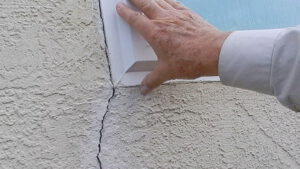Stucco Repair – How to Repair Stucco
You should know that there are several steps in repairing stucco, which will depend on the specific problem. However, before beginning Stucco Repair project, you should identify the problem and take necessary precautions. In the following paragraphs, we will discuss the most common symptoms and possible causes of stucco failure and how to fix them. Using the information below, you can find the right repair service for your project. We hope this information is useful to you.
You can apply a premixed stucco patch to repair larger cracks and holes. This material should match the surrounding stucco finish and be allowed to cure for a minimum of 24 hours. Once cured, apply a coat of water-based paint to cover the repaired area. When completed, the patch should feel flexible and pliable, indicating that the repair is sufficiently strong. Furthermore, it prevents moisture from penetrating behind the stucco.
Cracks in stucco may be caused by settling or other natural causes. You can repair these cracks yourself or call a professional for the job. But if the cracks are wider than a dime, you need to contact a professional stucco repair service. Otherwise, you may have to deal with a larger problem in the future, such as water penetration. In this case, you should hire a professional stucco repair service who can provide you with the right advice on how to repair the stucco.
Other causes of stucco damage include house settling and earthquake activity. When this happens, the wall will become unstable, and stucco repairs will be necessary. In addition to structural issues, improper installation and deficient weep screed can cause problems. In addition, failing to repair the problem immediately will only lead to more expenses in the future. If you put off this repair for a long time, moisture will accumulate behind the exterior wall and may even require expensive repairs.
Once the area has dried, you can apply a pigmented coating. It is important to note that the color of stucco may change over time, so you may need to test the color of the repair patch. Make sure that it matches the rest of the stucco on the surface. If the stucco is not the correct color, you can also use mineral paint or lime wash to bridge the hairline cracks.
In severe cases, repairing stucco is not a simple job. In addition to the materials used, the costs will be quite high. Depending on the damage, you may be able to repair hairline cracks yourself or hire a professional contractor. However, for major repairs, you should consider hiring a professional contractor. The cost of stucco repairs depends on the square footage of the damage and the number of hours it takes to complete the job.
While repairing stucco may not seem too expensive, it is essential to avoid further damage to your stucco. If you want to avoid more costly repairs in the future, you should consider hiring a licensed contractor to do the job properly. If you’ve had a problem with a stucco repair before, it’s best to hire a professional who knows the right steps in performing a stucco repair.
Minor cracks in stucco can be easily repaired by homeowners with the help of a stucco repair kit. The materials used are easy to find and apply, and they won’t take much time. You can even save half the cost of hiring a professional by performing the work yourself. On average, a DIY stucco repair will cost around $1,400 compared to a professional costing $750. But, if your crack is large and has structural problems, you should hire a professional.
The first step in stucco repair is to determine the cause of the damage. While stucco is a strong, durable material, it’s not immune to damage. Cracks in stucco can be caused by faulty installation of the material. Moreover, improperly installed stucco can lead to water damage. Early detection can save you a lot of time and money by preventing further damages from occurring. Luckily, there are two types of stucco repair solutions: premixed stucco and conventional stucco. Whether you’re repairing a stucco home or simply need a repair, you’ll need to follow the steps.
When applying the new stucco, you’ll need a wet patch and an acrylic bonding agent. The mixture should be mixed in a wheelbarrow and tossed against the existing stucco to avoid water loss. You can also use a finishing trowel to smooth the surface of the patch. Ensure that the new stucco layer is at least half an inch below the existing surface. If you do it yourself, it will be very easy to apply the second coat if everything goes as planned.
